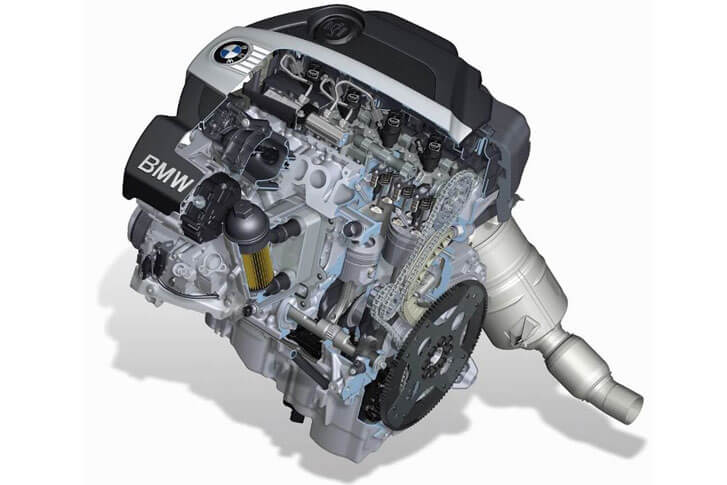
For every new model launch, BMW has always paid attention to comfort and performance. And when we look at the much talked about BMW’s diesel engines especially the N47, it consistently comes up at the top. But with the launch of new BMW X3 2015 with a face-lift, the game has been changed. Comes in the next generation of highly potent BMW engines.
So what is this new B47 engine like? Well one thing is for sure, it isn’t much different than its predecessor, the four-cylinder in-line, 1995 cc, common rail injection engine with a single turbocharger, the turbine geometry is variable though.
The xDrive 18d returned 143bhp and xDrive 20d gave the power output of 184bhp while using the N47, and now, after being upgraded to B47, they return 150bhp and 190bhp respectively. The maximum torque value on the other hand, remains the same in B47 at 360Nm but now between 1500-2250 rpm which was previously 1750-2500. If you are still not happy with it, the max torque can climb up to 380 to 400Nm in 1750-2250 rpm which previously required 1750-2750 rpm. Pretty impressive, isn’t it?
The level of flexibility of these new engines is evident from design which allows them to be used in Mini and BMW front wheel driven models, when mounted transversally and when you want them on other BMW’s, just have them longitudinally. 1.5 and 2.0 litres capacities are available in both three and four-cylinder layouts in diesel and petrol variants with 500cc combustion chamber.
So does this new B47 engine meet Euro 6 emissions standard? Yes it does, but the fuel consumption average is slightly lower. But you don’t have to worry as the consumption only decreases by 0.1 to 0.4 litres, depending on the expansion stage and transmission.
The new BMW X3 sDrive18d has become the most fuel-efficient SUV in its class by offering 4.7 litres as standard consumption using reduced rolling tyres.


